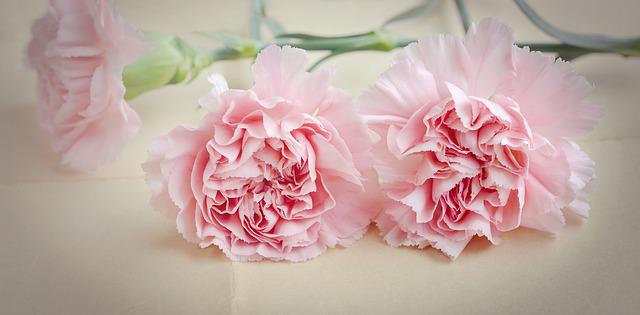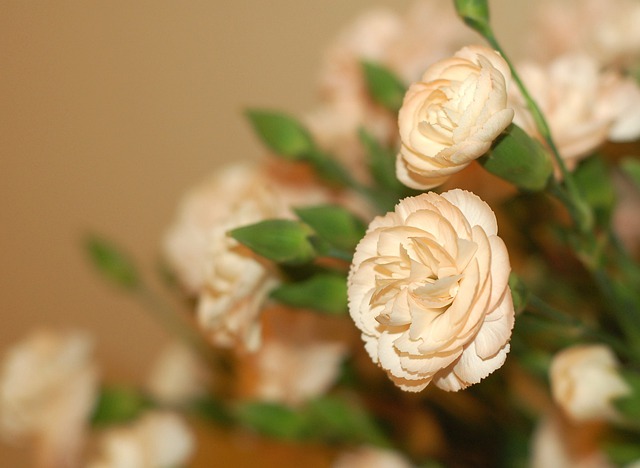How to Propagate Carnations

Carnation may be familiar in gardens and home windows, but how do you propagate carnations? There are a few different ways, but the most common is rooting cuttings taken from fresh flowers. First, carnation flowers are typically propagated by stem cutting. Make a few cuts down the flower’s stem below the soil line. Keep the cuts clean and dry, and then insert the stem into the soil. Make new cuts as needed, but try to keep the number of cuts minimum. Finally, water the plant and give it a little sunshine – all needed to start propagation. If you’re not comfortable with rooting cuttings, you can also purchase carnation plugs or divisions or even through seeds. Here are 3 methods to propagate carnations.
Table of Contents
3 Methods to Propagate Carnations
From Seeds
- You can also grow carnations from seeds, though carnation cuttings are the most reliable way to guarantee you get the desired plant. You can buy seeds from a garden center or grow your own by sowing the seed onto fresh soil in early summer. Cover the seed with at least 1/4 inch of soil to ensure a good germination rate.
- Make sure any container has good drainage holes in the bottom and is clean (bleach rinses work well for this). Then, fill the container within 1″ of the top with any respectable sterilized potting soil.
- Seeds should be spaced about 2″ apart on the surface, and soil should only cover them by about 1/8″ of an inch.
- Using a rubber band, cover the soil with plastic wrap or a baggie after giving it a light misting with a spray bottle.
- Place in a bright window where the temperature is between 65-70°F (18-21°C), and your pots will get at least 5 hours of direct sunlight every day.
- Once they have more than three “true leaves,” transplant seedlings you have grown in seedling trays into larger containers.
- When germinating, thin out the plants to 12-16 inches apart and water well; carnations require regular watering during their first few weeks of growth.
- Plant them 12 to 18 feet apart in their permanent garden locations after they have hardened off and reached a height of about 6 inches.
From Cuttings
Carnations can be easily multiplied through cuttings, which are best taken in the summer, typically from late June or early July to September, when the plant is in full growth following flowering. In addition, cutting a mature branch increases the likelihood of creating an open wound that could become infected. New growth has a better ability to root than mature cuttings. You can be certain you’ll get the plant you want if you grow it from cuttings. Seed-grown plants do not guarantee genetic uniformity.
- Take cuttings from a healthy, one-year-old plant on a cloudy day, if possible. Make your cut about one-fourth of an inch beneath a node. Make sure the clipping has four or five pairs of leaves and is approximately 6 inches long. To prevent spreading disease, sterilize your clippers in a bleach solution (roughly 1 part bleach to 9 parts water) before making each cut.
- Use a medium with good drainage, moisture, and sand-like characteristics, such as a 50/50 mix of perlite and vermiculite or a ratio of 1 part peat to 2 parts perlite. Remove the two leaves that are closest to the cut. Place the cutting stem in the medium after moistening it with water and dipping it in a rooting hormone. Use a pencil to make a hole in the soil before inserting the cutting to make sure the hormone powder sticks to the stem as you do so.
- Put the pot in a plastic bag with a small amount of water (so that you can water the plant from the bottom) and leave it somewhere that is well-lit but out of direct sunlight. Make sure the soil doesn’t get too dry. Typically, rooting takes three to four weeks, but it has been known for some cuttings to take root three months later.
- The central leaf rosette will produce new growth once rooting has taken place. Once you notice this, slowly open the bag over a few days to let in the fresh air. In well-drained, compost-rich soil, plant in a pot.

By Division
- Grab a clump of aged carnations.
- You can split the plant into separate plants to have multiple plants.
- Pull apart the plant parts and remove the flowering clump (with your hands or garden tools).
- Replanting these divisions requires the same care as planting a brand-new perennial or annual. This should be carried out every two to three years to maintain the health of your carnations.
